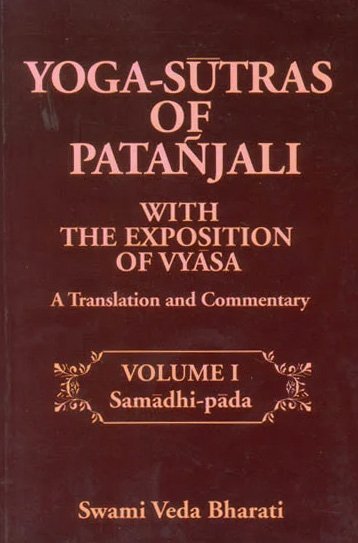Yoga-sutras (Ancient and Modern Interpretations)
by Makarand Gopal Newalkar | 2017 | 82,851 words | ISBN-13: 9780893890926
This page relates ‘Scientific Research work carried out by Kaivalyadham’ of the English translation of the Yoga-sutras of Patanjali: an ancient Indian tradition spanning over 5000 years old dealing with Yoga:—Meditating the mind on the Atma leading to the realization of self. This study interprets the Yogasutras in light of both ancient and modern commentaries (e.g., Vyasa and Osho) while supporting both Sankhya and Vedanta philosophies.
Part 4 - Scientific Research work carried out by Kaivalyadham
[Full title: Scientific Research work carried out by Kaivalyadham, Lonavla on Prāṇāyāma Techniques]
Karambelkar in his paper on ‘The Position of Yoga as a Science Today’[1] says that each school of Yoga has its own hypothesis, theories and methods of practical training for self-development.
Svamī Kuvalayānanda explains in article ‘ Prāṇāyāma in Yogasūtra and Vyāsabhāṣya ’[2] that Patañjali gives four types of prāṇāyāma in second pāda and one type in first pāda. Haṭhayogapradīpikā by Svamī Svātmārāma gives eight types of prāṇāyāma. But these eight types differ from Patañjali’s types because of technique of recaka and pūraka, and not because of kumbhaka. Patañjali has covered all prāṇāyāmas in ābhyantara. Patañjali does not explain the word Saṅkhyā which is one of the three tests to be applied for checking progress of prāṇāyāma. However, Vyāsa says, how this test of saṅkhyā is to be applied to the three types of prāṇāyāma.
Vyāsa means to say,[3] that a fair kumbhaka should be equal to particular number of time units to be counted in one breath. Generally, one exhalation and one inhalation take four seconds and is equal to one mātrā. But-Vyāsa does notmention the time units in specific as he knew that every individual will have different vital capacity and so the time units will differ. An experienced teacher should guide a student and slowly the student should gain mastery in perfecting 80 kumbhakas normally. Most other later commentaries have mentioned specific time units. The chanting of mantra or visualizing a deity is also part of time measure for prāṇāyāma. The time unit by Vyāsa is also not engaging and distracting sādhaka only in counting. It is four seconds and not just blinking of eyes.
Though Patañjali has not used the word kumbhaka, most commentators agree that Patañjali in the context of sūtra II.49,50 and 51 means kumbhaka (retention of breath) when he talks of prāṇāyāma.
Patañjali has laid qualitative tests for prāṇāyāma in sūtra II.50,52 and 53.
They are–
- Kumbhaka must become increasingly prolonged.
- It must be easier to practice.
- It must step by step decrease darkness preventing illumination.
- It must render mind capable of concentration.
According to Vyāsa, kāla is a quantitative measure, iyattā of the time units in the form of kṣaṇa.(kṣaṇa is one fourth of blinking of eye as per Vācaspati). So one needs to mark duration of one round and the number of rounds to measure kāla. Similarly, deśa is space where activity of kumbhaka can be examined. There is sensation like ant travelling on the body after one practices kumbhaka for a long period. The space in which you get this sensation is also deśa.
The commentators on Vyāsabhāṣya feel that saṅkhyā (measured by mātrās) and kāla. (measured by blowing of conches) are both measurements of time. This is the difference between commentaries on Pātañjala-Yogasūtras and Vyāsabhāṣya.
In a nutshell,
1. Patañjali means prāṇāyāma as kumbhaka only.
2. He refers to four types of kumbhaka as a) External b) Internal c) Kevala occurring in midst of sahitakumbhaka.
3. Kevala-Kumbhaka is brought about by single effort of will.
4. Progress in prāṇāyāma is to be judged by applying all the three tests of deśa, kāla and saṅkhyā.
5. When examined under the three tests, prāṇāyāma becomes prolonged and light to bear.
Footnotes and references:
[1]:
Karambelkar, Article in Yoga Mimamsa (The position of Yoga as ascience Today)paper at seminar in Kaivalyadham on 4.10.1964, p.8,
[2]:
[3]:
Ibid.,p225-258
